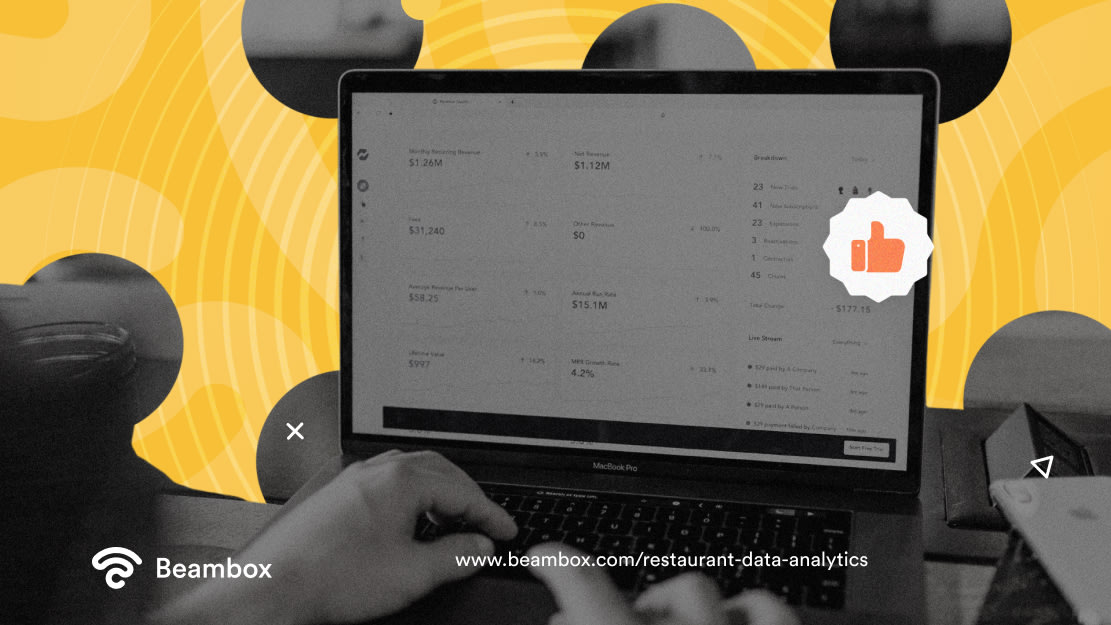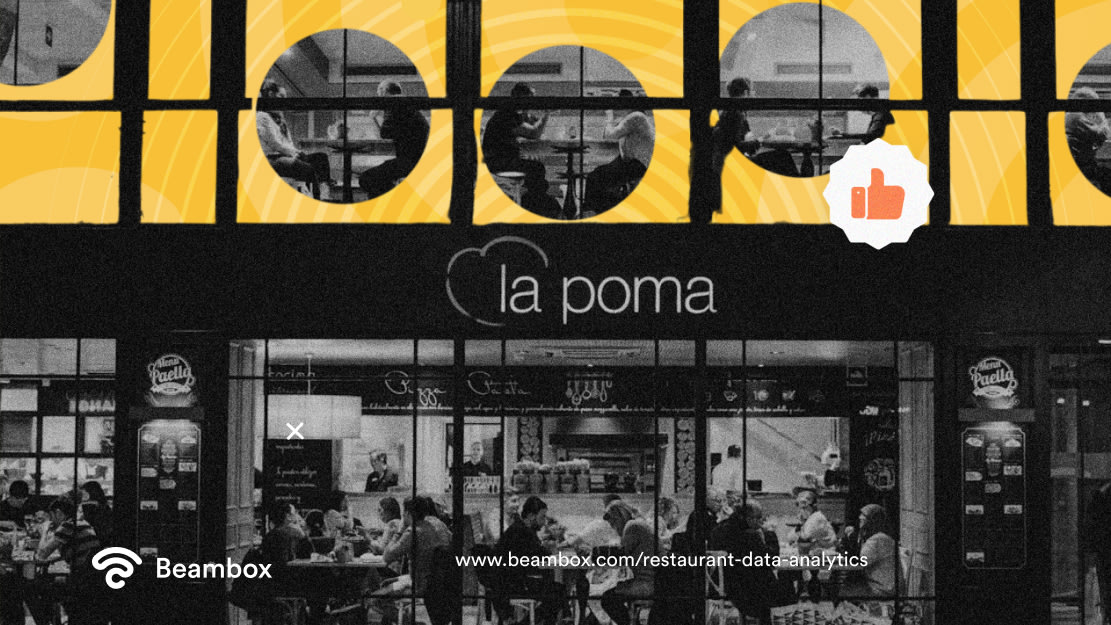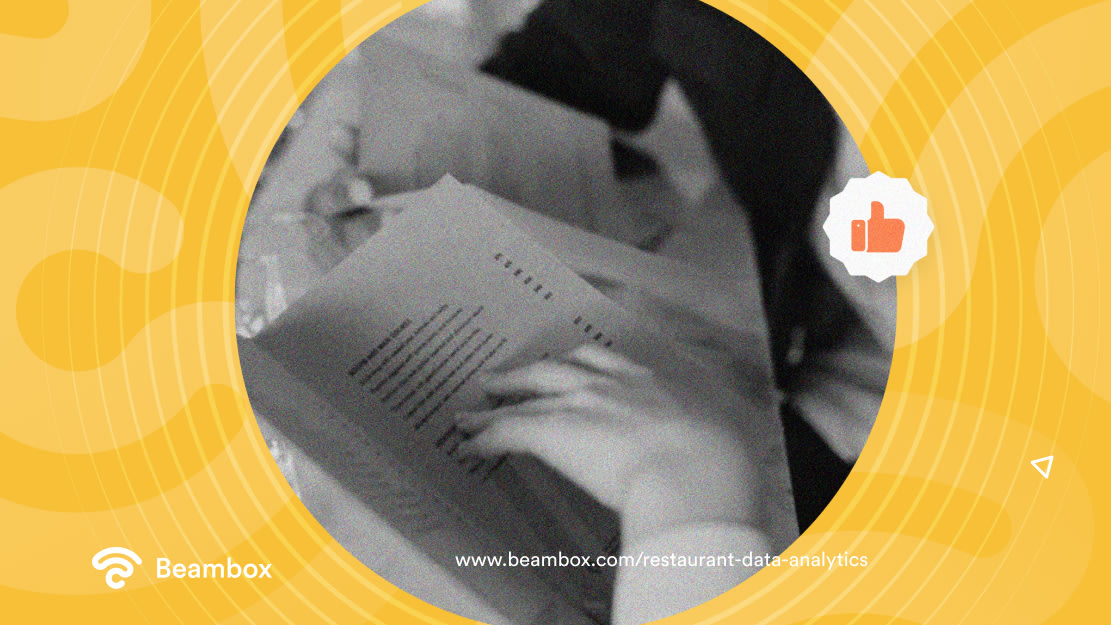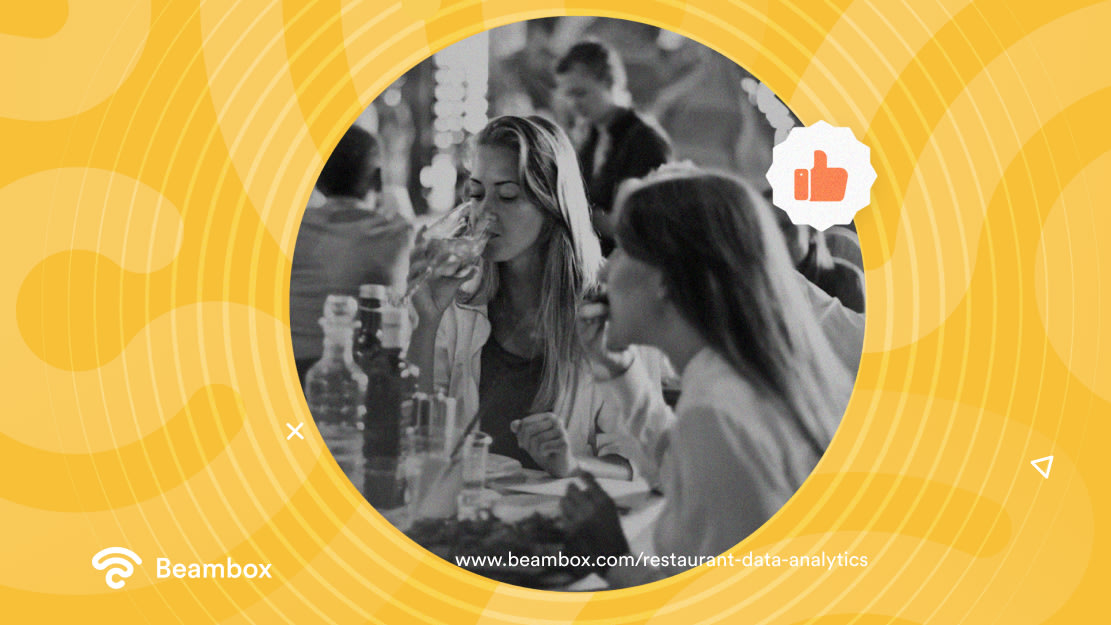Restaurant Data Analytics: 7 Ways To Improve Your Business
Restaurant data analytics might seem complex when you first hear about it. However, it’s simply the process of collecting information from multiple tools before putting it together to gain actionable insights. Put simply, you get a holistic view of your restaurant by making sense of your data. But what’s the need for this?
Running and improving any business is a numbers game; the restaurant industry is no different. You must know what’s working and what’s not to make better business decisions. However, it’s a time-consuming task that a single person or team might be unable to handle.
Therefore, you need tools and software to help you out. But even when you have the data, it might be challenging to figure out its uses. So, let’s discuss seven ways to use restaurant data and some solutions to improve the process.

Benefits of Data Collection for Restaurants
While making better decisions is the main advantage of restaurant analytics, many other benefits work together to facilitate it. Restaurant owners should be aware of all these aspects if they want to make the most of this process. So, here’s what you need to know.
Firstly, the insights from restaurant data analysis help you know your customers on a deeper level. You can use their preferences, history, and behaviors to create extensive customer profiles. These profiles are vital in increasing customer retention, improving acquisition, and enhancing satisfaction.
Secondly, you can use historical data to predict future trends. Of course, slight differences will exist between your predictions and the actual outcomes, but you’ll get an idea of what to expect.
This is especially beneficial for inventory management. When you know how many sales to expect in the future, you can plan accordingly and avoid food wastage.
Similarly, if your business is declining, you can use data from various sources to reveal the culprit. For example, by checking customer reviews, you can see their issues. Owing to that, you can make the appropriate changes to revive your business.
If you have a restaurant chain with multiple locations, skipping data analytics would be a bad idea.
Since each area has different trends, you can’t always use the same strategy everywhere. Alternatively, you’ll have to implement a solution that is already working in one location to bring betterment to the other. Without analyzing location data, you can’t judge when to change the strategy and when to keep it the same.
Lastly, data analytics also help you review your staff’s performances and other business operations. We’ll get into the details of these aspects later in this article.

7 Ways To Improve Your Business Using Restaurant Data Analytics
Have you heard that using restaurant data analytics can increase your profit margins by 8 to 10%? It’s true, but very few businesses take advantage of this process.
You must first know what kind of data you can collect to avoid this mistake. This data relates to your customers, inventory, marketing, staff, online operations, kitchen, sales, menu, and pricing. Once you collect this data, use these seven ways to improve your restaurant business.
1. Create Loyalty and Referral Programs
As mentioned earlier, restaurant data analysis helps you create customer profiles. You can use these profiles to create a loyalty program to encourage customers to keep choosing your restaurant.
Those profiles will tell you when a person became your customer. They will also tell you how often they visit your restaurant and what they order. Using this information, you can create tiers for your restaurant loyalty program. This means the more loyal a customer is, the better reward they’ll get.
Or you can launch an item-based loyalty program. Here, when a customer orders an item for a certain number of times, give them the next one for free.
Other types of loyalty programs include a point-based system, subscription rewards, and online rewards.
Similarly, you can introduce a referral program for people who bring friends and family to your restaurant. After all, they’re bringing you new customers, so they should get something in return, right?
For example, you can ask a new customer if one of your existing customers referred your restaurant to them. Since you already have the profiles, you can easily tie the points or rewards to that customer. This way, existing customers will keep making purchases while bringing you new business.
2. Manage Your Inventory
Success in the food industry also depends on your inventory situation. If you have more than you need, you might waste money. That is a common inventory management mistake. On the flip side, you might struggle to fulfill orders if you have less inventory. That might lead to frustrated customers, ultimately affecting the health of your business.
Keeping an eye on your inventory data is one of the best ways to manage this situation effectively. However, you have to invest in good inventory management software that lets you set alerts.
As soon as an item is nearing depletion, the software should notify you so you can order more of that item.
Moreover, this data can help you find better ways to use your inventory. For this, check your inventory to see what you aren’t using regularly or items that are nearing expiration. Let’s say you find this item to be almonds.
This is a good chance to introduce special keto pancakes to your menu. Grind the almonds into almond flour and replace the sugar with natural sweeteners.
This way, you won’t have to waste the almonds. Plus, you’ll be able to introduce a limited-time special, attracting more customers.

3. Get Help Managing Your Staff
As mentioned earlier, staff data is also a part of restaurant data analytics. You can know how your staff is performing and make decisions accordingly. After all, labor costs are one of the biggest expenses a restaurant has to make. You wouldn’t want to keep paying a staff member who isn’t bringing you the expected results.
For example, if you find a staff member constantly lacking in performance, it might be time to let them go. Or, if you see a potential for change, you can train them to perform better.
Moreover, when you know the areas your employees lack, you can train them better. But you won’t know all this without paying attention to staff data.
So, record things like employee turnover rate, table turnover rate, prime costs, total sales by server, peak times, etc. Using these metrics, you’ll also be able to create better shift schedules.
4. Improve Your Marketing Efforts
Along with performance metrics, you must also see how your restaurant marketing campaigns are performing. Your website, social media pages, and other online profiles are all impressive data points.
Combine data from all these sources to see how customers respond to your marketing efforts. This way, you’ll get a holistic view of your customer base and pinpoint problems with your positioning.
Moreover, customer data gives you a chance to personalize your marketing efforts. For example, if a customer often visits in the morning, email them a special breakfast offer.
Lastly, by tracking marketing data, you’ll know which campaigns are working and which aren’t. This data allows you to build on successful campaigns and bring in more revenue.

5. Engineer a Better Menu
Now, let’s talk about menu development.
Here, you use your restaurant’s sales data and food costs to change the menu items and pricing. It is a very effective technique for improving your restaurant business.
Using data analytics, you can track your most popular dishes, see if your layout works, repeat orders, etc. This data can guide your menu decisions for better performance. For example, you can reduce prices or introduce discounts for your least popular dishes. Or you can create deals to facilitate cross-selling. Changing the layout or how you describe your dishes can also help increase your sales.
6. Provide the Best Customer Experience
Restaurant data analytics also help you improve customer experience. Guests want to feel welcome at your restaurant, and the best way to help them do that is to personalize their visit.
For example, offer a special discount or a free item to people who visit on their birthdays or anniversaries. This will create a connection between you and your guest. Plus, they won’t be able to resist sharing this experience on social media and with their friends and family. This will encourage other people to celebrate their special occasions at your restaurant, giving you more sales.
Moreover, analyze customer reviews to see what they would like to experience when they visit. Applying such changes will pass the message that you want to listen to and improve. That’s the best thing you can do to make customers loyal to your restaurant.
Remember we mentioned the relation of data analysis with staff management? Well, that helps here as well. With better shift schedules, customers won’t have to wait too long. That will add to the experience and increase satisfaction.

7. Create a Better Atmosphere
Lastly, data analytics also help you create a better atmosphere for your guests. This relates to the seating arrangement and decoration of your restaurant. With a better atmosphere, you can attract more customers, make them stay longer, and increase your chances of sales.
You must analyze customer feedback, sales and traffic patterns, and demographic data for this. Also, see what your customers are saying about your seating arrangement, themes, lighting, and music to make the appropriate changes.
Moreover, you might find that your audience is quite active on social media. Take advantage of this and set up photo booths for them to create memories. When they tag your restaurant, you’ll get more foot traffic.
Additionally, customer data will make it easier for you to choose between a relaxed and vibrant environment. Pick the former if you have more of a younger audience and the latter for the older age group. Choose the related themes if your restaurant is busier during the holidays. This will help attract the right audience at the right time and increase customer loyalty.
Restaurant Data Analytics Solutions: Tools To Capture Restaurant Data
Now that you know how restaurant data can help you improve your business, let’s discuss the sources to capture it.
You already know what type of data you need to pay attention to. But where do you get this data from? Well, there are two ways to do this.
Firstly, you can invest in dedicated restaurant data analytics solutions and integrate them with your POS system. You can also have different software for each type of data and combine it to facilitate decisions.
Another great tool to capture data is WiFi marketing software. These solutions collect data from your customers when they navigate the internet using your restaurant’s WiFi.
However, when choosing a data collection platform, choose one that suits your needs. Sometimes, platforms offer a wide range of tools and features that you might not need and would increase the bill.

Use Restaurant Data To Attract More Guests
Overall, restaurant data analytics is the professional name for collecting and analyzing data from various sources for better decisions. As you read, data can find multiple applications in your business.
If you offer free WiFi to your customers and want to leverage data, try Beambox. This WiFi marketing platform allows you to collect data while complying with regulations. Moreover, the software will transform the data into actionable insights that you can use to enhance marketing and operations.
Beambox has no hidden fees and does not require additional hardware. Start your trial today!
Get Started With Free WiFi Marketing
Beambox helps businesses like yours grow with data capture, marketing automation and reputation management.
Sign up for 30 days free


